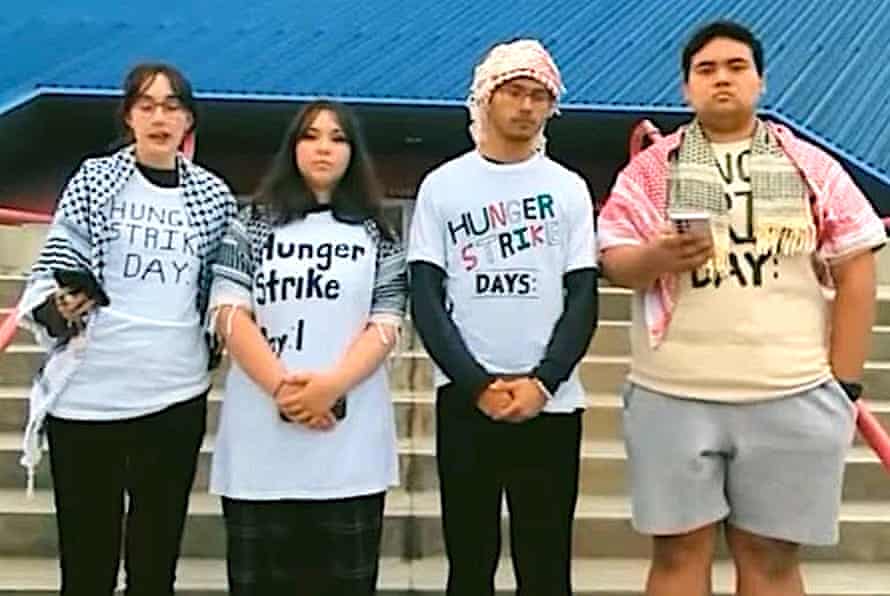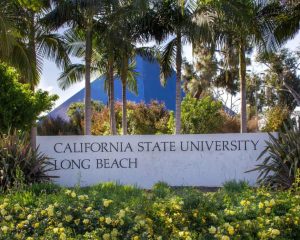In a bold act of political resistance, around two dozen students from California State University campuses began a hunger strike on May 5 to protest the ongoing humanitarian crisis in Gaza and demand divestment from weapons manufacturers. The protest, organized by Students for Justice in Palestine (SJP), spans San Jose State, Sacramento State, San Francisco State, and CSU Long Beach.
“We, the students of San Francisco, Sacramento, Long Beach, and San Jose State Universities, are beginning a united hunger strike in solidarity with the two million Palestinians at risk of starvation in Gaza,” SJP announced in a press release.
The hunger strike is in response to Israel’s ongoing blockade of humanitarian aid to Gaza, which has stretched past the two-month mark and drawn fierce international criticism. The situation has worsened following Israeli Finance Minister Bezalel Smotrich’s controversial statement that “Gaza will be destroyed.”
Student striker Max Flynt of San Francisco State University described the aid blockade as the central motivation behind the action. Under a “Hunger Strike for Gaza” canopy on campus, organizers hold daily educational workshops, and strikers regularly monitor their vitals though they do not stay overnight. “Many of the protests used last year, especially encampments, are now essentially illegal in the U.S.,” said Flynt. “If we were to put up a tent today, the police would be called almost immediately.”
Jaime Jackson, a professor at Sacramento State and member of Faculty for Justice in Palestine, underscored the hunger strike’s symbolic weight. “The bombing, the killing, the massive violations of human rights have been an ongoing issue throughout,” Jackson said. “But the recent, really big thing has been the blocking of humanitarian aid and the ongoing starvation of people in Gaza.”
The student movement has also been met with mounting crackdowns, particularly under the Trump administration, which has continued the Biden-era policy of increased restrictions on campus protests. International students have faced additional risks, with vocal support for Palestinians putting their visas and academic standing in jeopardy.
“They’re scared of the student movement,” Flynt said. “They’re scared of what they saw last year, and they’re scared that it will come back again.”
Protesters are calling for several actions from the CSU system, including adopting San Francisco State University’s Human Rights Investment Policy Screening, cutting ties with Israeli universities, and divesting from companies involved in military, weapons, and surveillance technology. “We don’t want to be used to fund war efforts or genocide through these companies,” said Amal Dawud, an undergraduate organizer at Sacramento State.
Some progress has already been made. San Francisco State University confirmed divestment from Lockheed Martin, Palantir, and Leonardo. Sacramento State also reportedly began divestment processes last year, although questions remain about how thoroughly the changes have been implemented.
Marcus Bode, a hunger striker from CSU Long Beach, criticized his university’s partnership with Boeing, a key supplier to the Israel Defense Forces. Bode, like other strikers, is limited to water, electrolytes, and sports drinks during the fast. He reported early signs of physical decline, aching joints, muscle cramps, and dizziness. Still, he remains resolute. “We don’t see tuition hikes reinvested into students,” Bode said. “It’s being used to fund war and genocide abroad.”
Despite student pressure, the CSU system has not budged. “We will continue to uphold the values of free inquiry, peaceful protest and academic freedom,” said Amy Bentley-Smith, CSU’s director of media relations. “However, the system and its campuses will not alter investment policies.”
As the hunger strike enters its second week, student organizers say they are prepared to continue their protest for as long as it takes. For them, it’s not just about dollars and divestment, it’s about taking a stand for lives on the line thousands of miles away.




